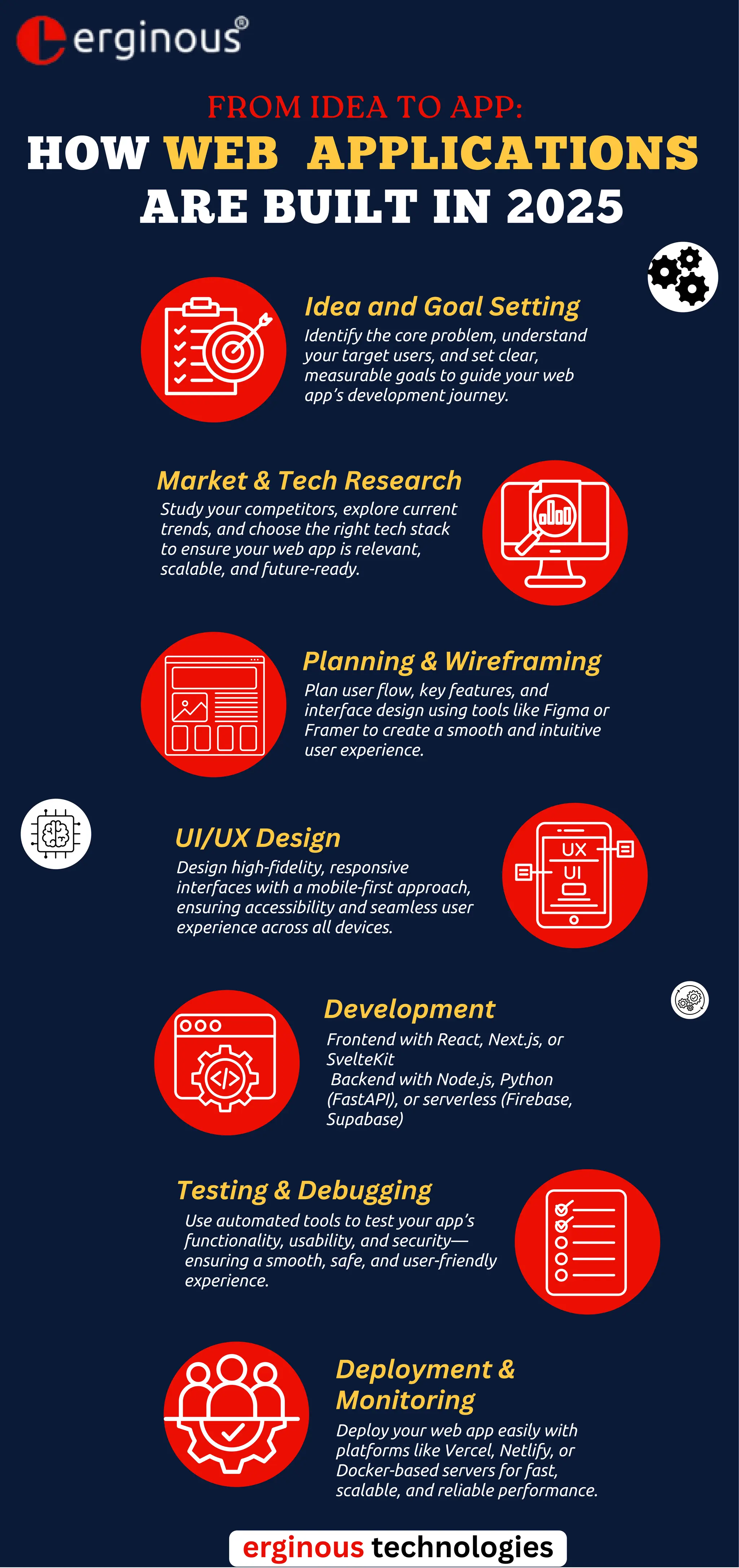Intégrer la présentation
Télécharger pour lire hors ligne


In 2025, the process of building web applications has evolved into a highly refined, agile, and innovation-driven approach that merges advanced technologies with a strong focus on user experience and business scalability. The journey from idea to a fully functioning web application is no longer just about writing code—it’s about crafting a digital experience that aligns with user needs, business goals, and future adaptability. It all begins with a deep understanding of the idea behind the application. Developers and stakeholders collaborate closely to transform the core concept into clear, actionable goals. Market research, user behavior analysis, and competitor insights play a significant role in shaping the application's vision and features. In 2025, this phase often includes AI-assisted analysis tools that help predict user preferences and potential challenges, making the foundation of the app more data-driven than ever. Once the requirements are finalized, the focus shifts to user interface and user experience (UI/UX) design. Modern web applications demand pixel-perfect, responsive, and intuitive interfaces. With design systems powered by tools like Figma, Adobe XD, and AI-enhanced UI kits, developers and designers can prototype and iterate designs faster while ensuring a consistent experience across devices. Accessibility, inclusive design, and performance optimization are prioritized from day one. Behind every great UI lies a robust architecture. Developers now leverage headless CMS platforms, microservices, and serverless architectures to build scalable, modular applications. Programming languages and frameworks like React, Angular, Vue.js, Next.js, and backend technologies such as Node.js, Python (Django/Flask), and Golang are commonly used. Cloud platforms like AWS, Azure, and Google Cloud provide a flexible and secure environment to host and scale web apps globally. In 2025, AI integration is no longer optional—it’s essential. AI-driven chatbots, personalized content engines, real-time analytics, and predictive features are frequently embedded in web applications to enhance user engagement. Security is also deeply integrated into the development cycle, with DevSecOps practices ensuring continuous monitoring, vulnerability assessment, and compliance with data privacy laws like GDPR and CCPA. The development workflow relies heavily on Agile and DevOps methodologies. Sprints, continuous integration and deployment (CI/CD), automated testing, and code quality checks are standard practices. Version control systems like GitHub and GitLab, along with collaboration tools like Jira and Slack, enable seamless communication between cross-functional teams. Once development reaches maturity, extensive testing ensures the application is bug-free, responsive, and compatible across all platforms and browsers. Quality assurance in 2025 uses automated testing, UAT, and performance tests under high-load simulations to ensure reliability.
